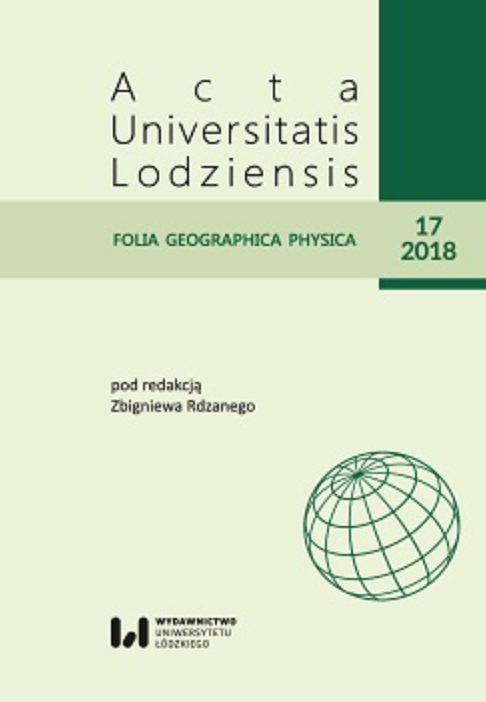Zmiany koryta Kamionki (Płaskowyż Suchedniowski) na odcinku Ostojów – Rejów od XVIII wieku w oparciu o archiwalne materiały kartograficzne
Changes in the Kamionka channel (Suchedniów Plateau) along the Ostojów – Rejów section, since 18th century, based on archival cartographic materials
Author(s): Paweł Przepióra, Tomasz KalickiSubject(s): Physical Geopgraphy
Published by: Wydawnictwo Uniwersytetu Łódzkiego
Keywords: Kamionka; river changes; anthropogenic anastomoses; watermills; forges
Summary/Abstract: The aim of this paper is to present changes in the Kamionka riverbed and small-scale water retention in recent centuries, including the impact of anthropogenic activities. Kamionka is a right-side tributary of the Kamienna river. It is located in the northern part of the Świętokrzyskie Province. Kamionka is classified as an upland river, while its upper section can be characterized a mountain river. The length of the watercourse is 17 km and its average grade is 5‰. The Kamionka catchment covers the area of around 107 km2. The catchment area was located in the central part of the Old Polish Industrial District. From the Middle Ages to the end of the 19th century, there were about seven forges and many water mills. Many times the infrastructure of old forges was also used for mills, most of which in the Kamionka from the 19th century to the beginning of the 20th century. Forges and water mills led to visible changes in the development of the riverbed. These changes were reflected in the formation and disappearance of anthropogenic anastomoses and the anthropogenic small-scale water retention system. It is visible in archival and cartographic materials that perfectly record such changes. At the beginning of the 20th century, the activity of forges at Kamionka ends, as well as the activity of water mills in the middle of the 20th century. Currently many remains of the infrastructure of metallurgical and milling facilities have survived as embankments, channels and old ponds. The Kamionka valley is characterized by the presence of many, clear traces of industrial activity from the last centuries. It is visible in the form of preserved sections of multichannels which are the result of large anthropogenic transformations of the riverbed. The renaturalization process led to the destruction of many anthropogenic forms in the field, while the old ponds were drained or silted, becoming part of the Kamionka flood plain.
Journal: Acta Universitatis Lodziensis. Folia Geographica Physica
- Issue Year: 17/2018
- Issue No: 17
- Page Range: 25-32
- Page Count: 8
- Language: Polish

